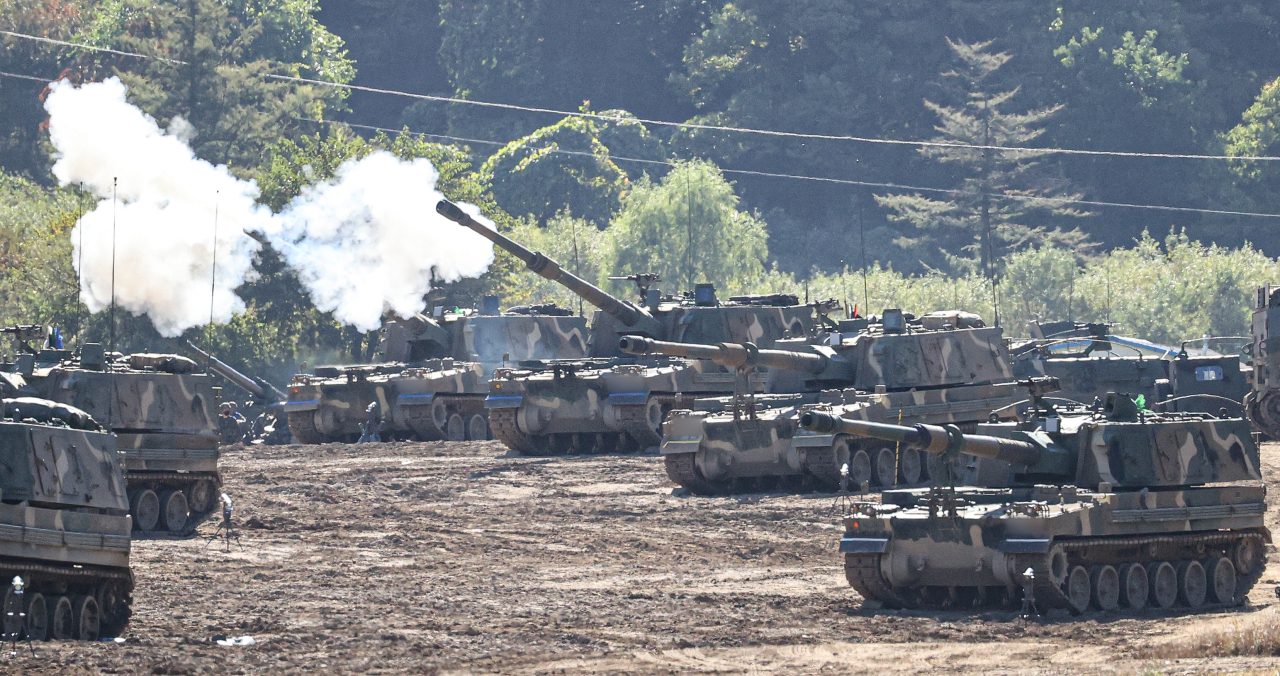S.Korea begins major Hoguk field training exercise amid N.Korea’s saber-rattling
By Ji Da-gyumPublished : Oct. 17, 2022 - 15:53

The 12-day Hoguk exercise will continue until Oct. 28 with the participation of the Army, Navy and Air Force and Marine Corps amid simmering tensions between the two Koreas.
The Hoguk theater-level field training exercise has been annually conducted in the second half of the year with a focus on “maintaining military readiness and improving joint operational capabilities” among forces, according to the JCS.
The joint forces aim to “master both wartime and peacetime mission performance capabilities by conducting real-world, day and night field training exercises which simulate countering North Korea’s nuclear, missile and other various threats.”
The US forces also were set to take part in the Hoguk field training exercise led by South Korea’s JCS to enhance interoperability with South Korean counterparts.
South Korea’s JCS spokesperson Kim Jun-rak said Monday morning that the military would stage the Hoguk exercise based on a comprehensive assessment of the recent security situation when asked about the chances of North Korea making provocations.
Kim underscored that the South Korean military has been “closely tracking and keeping close tabs on related moves and maintaining firm readiness posture.”
South Korea’s Unification Ministry said Monday it “has been preparing for all possibilities in coordination with related ministries” when asked about chances of North Korea tentatively halting its provocations during the Chinese Communist Party's weeklong congress.
This year’s Hoguk exercise began after North Korea repeatedly sought to justify its banned ballistic missile launches and artillery firing in violation of the inter-Korean military agreement as counteractions against South Korea’s regular and defense-oriented military drills.
North Korea fired around 560 artillery shells on Friday from inter-Korean border areas into maritime buffer zones which the two Koreas agreed on under the military tension reduction deal. The South Korean government said the artillery firing violated the Sept. 19 Comprehensive Military Agreement.
Pyongyang concurrently fired a short-range ballistic missile off its east coast from the capital city of Pyongyang on the same day. In addition, North Korean warplanes crossed the South Korean military’s tactical action line between late Thursday night and early Friday.
But North Korea claimed that its artillery firing, ballistic missile launch, and flying of warplanes near the inter-Korean border were military counteractions against live-fire drills conducted by South Korean and US forces in Cheorwon County, Gangwon Province. South Korean military officials confirmed that the US Forces Korea fired artillery shells from multiple launch rocket systems during the drills.
A spokesman for the General Staff of the Korean People’s Army said Friday that the North Korean military took “strong military countermeasures” against the “South Korean military’s provocative action in the front-line area” in a statement.
The General Staff of the Korean People’s Army on Saturday warned that it will take “thorough and overwhelming military countermeasures” against South Korea by issuing another statement.
North Korean state media on Oct. 10 claimed that the military conducted the seven discrete ballistic missile launches from Sept. 25 and Oct. 9. in response to bilateral naval drills between South Korea and the US and trilateral maritime exercises among South Korea, the US and Japan.
During his visit to the JCS’ battle control center, South Korea’s Defense Minister Lee Jong-sup on Sunday warned that North Korea’s recent military actions and “far-fetched claims” and denunciation of the South Korean military’s legitimate artillery exercise could show North Korea’s intent to carry on further provocations.
Lee emphasized that North Korea’s continuing ballistic missile launches and flagrant violations of the Sept. 19 inter-Korean military agreement “could be meticulously planned provocations and the beginning of the intended scenario to conduct a series of provocations.”
Lee underscored the significance of maintaining a “firm military readiness posture against any kind of North Korean provocations and threats,” calling for the South Korean military to “take decisive initial countermeasures as a self-defensive action without hesitation if North Korea makes direct provocations.”
North Korea has historically made local and direct provocations against South Korea during the Hoguk exercise. In November 2010, North Korea fired artillery shells at the island of Yeonpyeongdo when the South Korean military staged the Hoguk exercise. The artillery bombardment killed two soldiers and two civilians, injured many others, and devastated villages.



















![[Today’s K-pop] Treasure to publish magazine for debut anniversary](http://res.heraldm.com/phpwas/restmb_idxmake.php?idx=642&simg=/content/image/2024/07/26/20240726050551_0.jpg&u=)